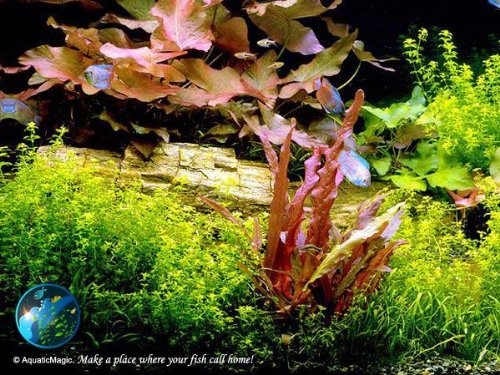Barclaya Red - Live Aquarium Aquatic Plant for Seed Aquascape Moss Java Fish Tank Review


Barclaya Red - Live Aquarium Aquatic Plant for Seed Aquascape Moss Java Fish Tank Feature
- You are winning 1 bulb of Barclaya longifolia red
- Barclaya longifolia is native to a wide swath of Southern Asia. It has always been relatively uncommon in the North American hobby, where it can obtained through trade with fellow hobbyists, but is a bit more widely available elsewhere, where it is reproduced in nurseries.
- Ideal to set as the focal point of aquascape for its distinctive red color.
- Dormant periods sometimes occur when the leaves disappear, but the plant starts forming new leaves a few months later
- Supply of this plant is seasonal. Try to grab it while stock last! Note: Leaves will be removed for shipping. We only ship bulbs that have successfully germinate
Barclaya longifolia is native to a wide swath of Southern Asia. It has always been relatively uncommon in the North American hobby, where it can obtained through trade with fellow hobbyists, but is a bit more widely available elsewhere, where it is reproduced in nurseries.
Propagating B. longifolia is as interesting as the plant itself. New plants occasionally form at the base of a larger plant's bulb, but propagation through seed is far more productive. In fact, B. longifolia is one of the easiest plants to reproduce through sexual propagation. Healthy plants routinely send up flower stalks that somewhat resemble those of poppies and will self-pollinate whether they reach the surface and flower or remain closed and don't (cleistogamy). As seeds start to develop, the enlarged area grows and when the seeds are mature, starts to dissolve. It is highly recommendable to cut off the flower stalk when that happens so that it does not make a mess of the aquarium. Inside the pod is a white jelly-like substance that encloses numerous thorny and tan-colored seeds. Separate them from the jelly and transfer them to an area that receives unimpeded light and is protected. A sandy area in a tank with sedate fish or a dish in an emersed setup are ideal. Even scattering them about the foreground of an established tank will result in a fair number of specimens appearing over the next few months. As the seeds sprout, they are even more vulnerable to snails than ever. Once they have grown to a few inches high, seedlings are ready for transplanting.




With the development of the whole technique, China glass reactor is greatly developed. From here: www.toption-china.com/reactors-and-instruments/chemical-synthesis-reactor-series.And a lot of different types of reactors may begin to be produced.
ReplyDelete